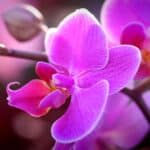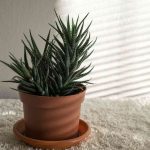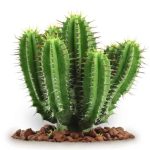As plants have different species, their stems are also of different colors ranging from green, purple, red, yellow, etc. These can be indoors or outdoors plants. Some of the common plants with red stems include castor bean, pokeweed, pigweed, etc.
The stems supporting several plants come in different shades of red. Although, some factors like genetics could be responsible for some plants changing to different colors other than their original colors.
However, there are some plants whose stems are naturally red and this is exactly what you will be learning in today’s guide.
So, if you've ever wondered about what plants have red stems, this article is specifically meant for you.
Let's get started!
Table of Contents
Top 16 Plants With Red Stems
If you are looking for plants with red stems to grow in your garden, this guide will provide you with some of varieties that you can choose from.
Red stems plants always stand out in a garden amidst a group of other plants. They come in different striking shades and beauty.
Here are some of the red-stemmed plants:
1. Lady’s Mantle (Alchemilla erythropoda)

The Lady’s Mantle is a perennial plant that grows in a direction opposite of the usual pattern of green and red flowers.
It can be a beautiful sight to behold when grown in sunny regions; the red stems make it particularly eye-catching.
When does Lady’s mantle bloom? The Lady’s Mantle blooms in early to mid-summer and can grow up to a maximum height of about 24 inches.
2. Red Stem Thalia

Red stem Thalia is a good choice when considering plants for your pond. It has wide, lime green leaves and little violent flowers and can grow up to 4 feet high. It's among the types of plants in the ocean.
Propagation of red stem Thalia plants can be in planters (pots) or small groups in wet soil.
3. Castor Bean (Ricinus Communis)
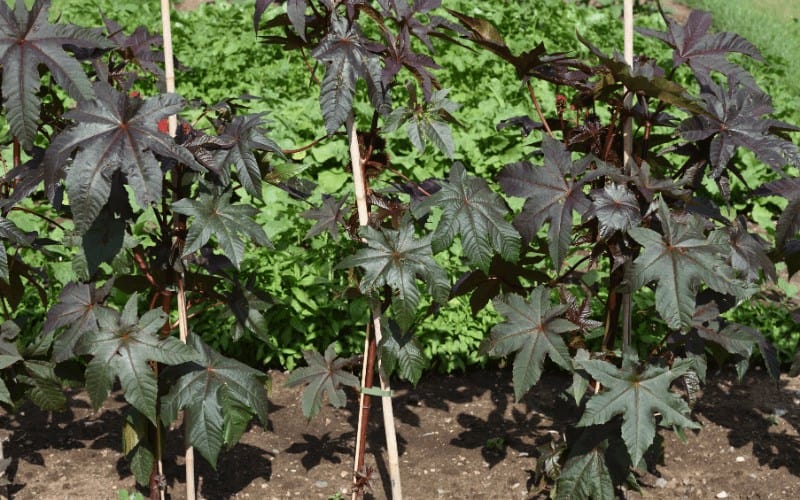
According to Salunke and Desai (1992), castor beans which are also known as castor oil plant have its origin from Ethiopia east Africa but is now being grown in topical and hot temperate regions across the world.
It is a fast-growing perennial plant about 39ft (12m) in height. Some species have green leaves and red stems while others are completely purple-reddish or can change color as they mature up.
Its seeds contain a highly toxic poison called ricin which, if mistakenly swallowed in its raw form, can kill an adult human being.
The castor oil plant is highly beneficial to man as it has several medicinal uses, such as antifungal, removal of stretch marks, faded scars, antimicrobial, and facial cleansing.
4. Pokeweed (Phytolacca Americana)
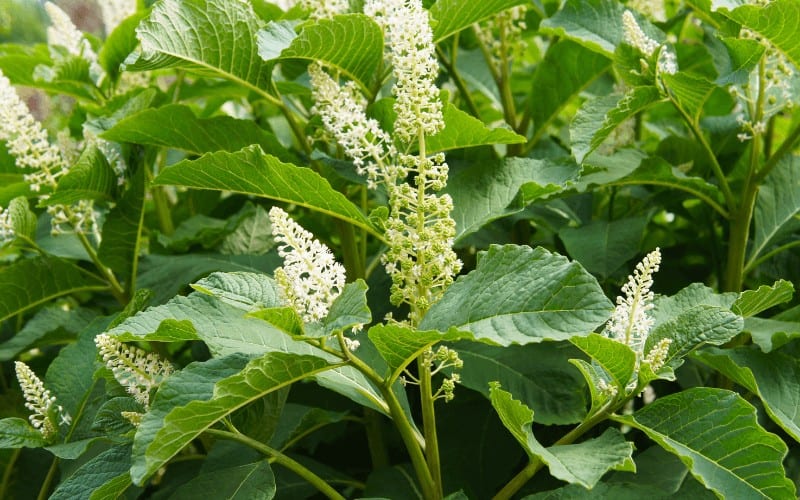
Pokeweed is a perennial plant that can grow in many regions. Its adaptation to growing in many soil types and environments is one of its unique characteristics and can grow up to about 10ft (3m) high.
Apart from its red stems adaptation, it has other characteristics that make it stand out like the fruits. It produces grape-like green berries often in clusters during late summer and ripens during fall.
Fruits produced by Pokeweed are poisonous to man-animals just as its other parts are. Therefore, fruits of Pokeweeds should not be consumed.
5. Pigweed (Amaranthus)
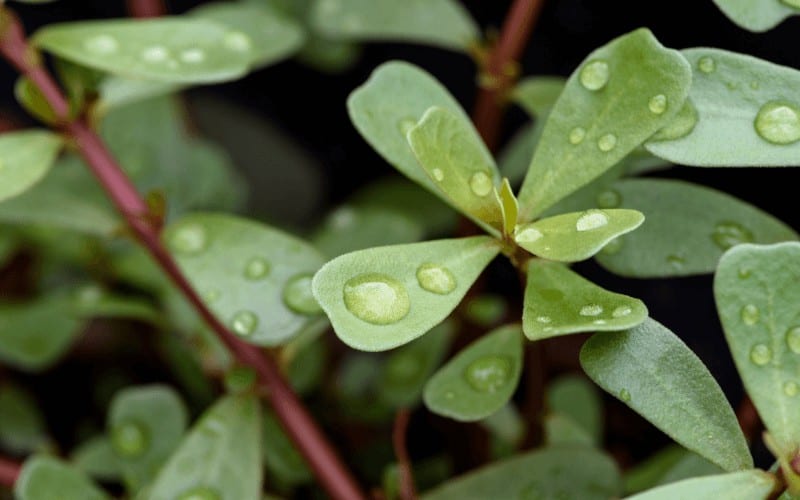
Pigweed is a genus of the herbaceous plant of over 70 species across many countries. Because they are of different species, not all of them have red stems.
They are standing plants with very wide leaves and with different colors like red, green, or purple.
A good number of the Pigweeds are edible as some are even grown as leaf vegetables. They are also ornamental plants and a source of cereals.
6. Red Osier (Cornus Sericea)
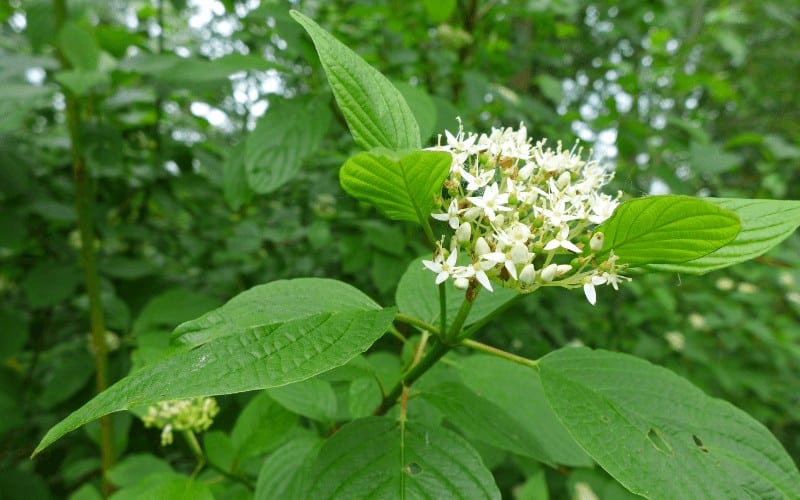
This is a medium-sized shrub of the family of Cornaceae. It is also known as red stem dogwood, red willow, American dogwood, red-rood, creek dogwood, etc.
It has elliptical green leaves with edges somewhat reddish in color. It can grow to a height of about 4m (13ft) and 5m (16ft) wide.
During the cold season when it sheds its leaves, the red coloring of its twigs makes it unique from other plants being an ornamental plant.
7. Mountain pepper (Drimys Lanceolata)
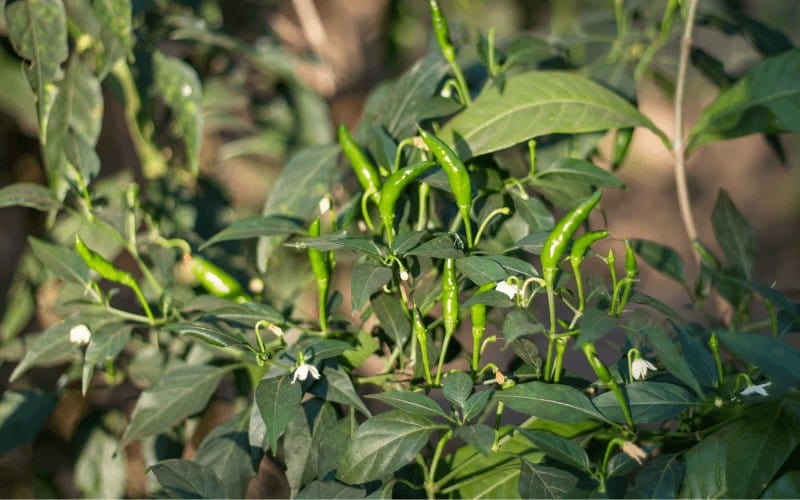
This plant is known to have its origin in Australia. It has red stems with black and long green leaves often wide and has the shape of a lance tip. It blooms during summer.
The leaves and their fruits have a strong and sharp aroma which makes it a good substitute for black pepper. This is why it is referred to as “mountain pepper”
8. Himalayan Balsam (Impatiens Glandulifera)

Native to the Himalayas mountainous regions, Himalayan Balsam is a fast-growing plant that is also known as ornamental jewelweed, policeman’s helmet, bobby tops, copper tops, kiss-me-on-the-mountain, etc.
It’s annual, upright growing plant that produces a green or red stem, which often harden once it matures. The leaves are green in color and as a lance-like shape with a pointy top.
Himalayan Balsam grows pink or white flowers that have a hooded shape – and can grow up to 6.5 feet (2 m) tall.
This red stem plant is now found in several countries because of human introduction to non-native areas. It is considered an invasive plant in some places.
Interestingly, Himalayan Balsam is very adaptable and quick to spread because of its superb explosive seed dispersal mechanism, which pushes the seeds at a long distance from the plant.
9. Red Tree Peperomia (Peperomia obtusifolia)
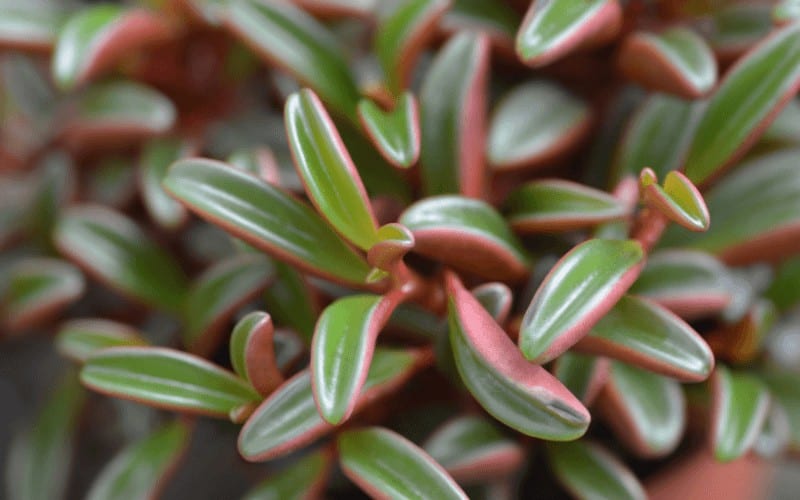
Also known as metallic peperomia, red tree peperomia is a perennial evergreen plant with an upright, branching growth habit.
Under the right growing conditions, such as average watering, bright indoor sunlight, and acidic soil, the upright varieties can grow to a height of 6 to 8 inches. Although, the trailing varieties of peperomia may grow vine-like stems that are much longer.
Peperomias develops reddish-green or dark red stems with narrow, green leaves. The plant is hardy in USDA zones 10 through 12.
10. Peonies (Paeonia Spp.)

Native to Asia, Europe, and Western North America, Peonies belong to the flowering herbaceous perennials and shrubs genus. It’s one of the many plants that have red stems.
They are popular and mostly loved by many because they have a long lifespan, are a low maintenance plant, grow attractive flowers of different colors, and peonies do not have many problems.
While peonies come in over 30 species, peony (common peony) is the species that is often found in the garden.
You can easily recognize peonies when the plants start blooming and when their foliage is completely formed. Some people find it hard to classify them when their sprouts come in clusters from the ground during the spring period.
The shoots often look strange in this growth phase, and both the leaves and the stems can be red in color, making peony’s identification somewhat tough for people that have never seen the plant in its early development stage.
Peonies stems and leaves usually turn green as the plant grows. However, the stems and under leaves of some species, like the Balearic peony (Paeonia cambessedesii), remain red even when the plant fully matures.
11. Red-Stemmed Begonia (Begonia grandis subsp. evansiana)
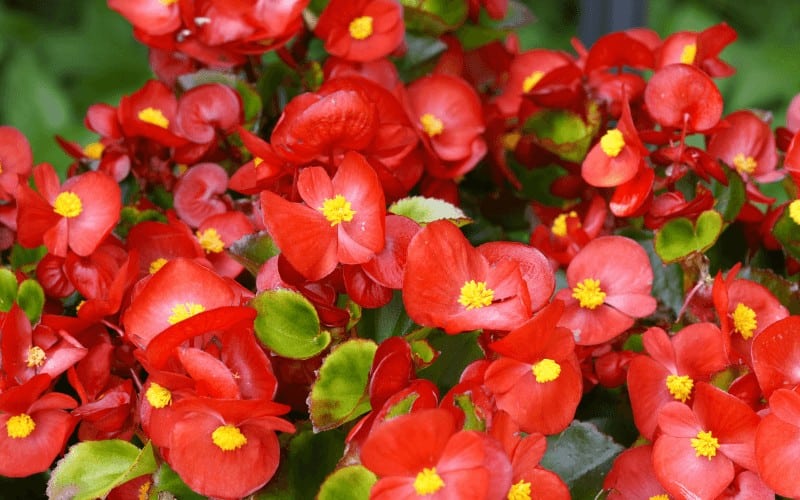
Some varieties of the large begonia genus produce green and red leaves; however, the evansiana variety of the grandis begonia has red and green leaves on red stems.
The perennial tuberous begonia is low maintenance foliage plant. It can be summered outdoors, grown as a houseplant, or used as a garden perennial in environments where it is hardy as stated by the University of Florida IFAS Extension.
This red stem plant can grow up to 24 inches tall and 12 inches wide, it equally grows red-centered, white flowers. You might want to check out begonia if you’re looking for plants with red stem 7 letters. The plant is hardy in USDA zones 6 through 9.
12. Common Purslane (Portulaca Oleracea)
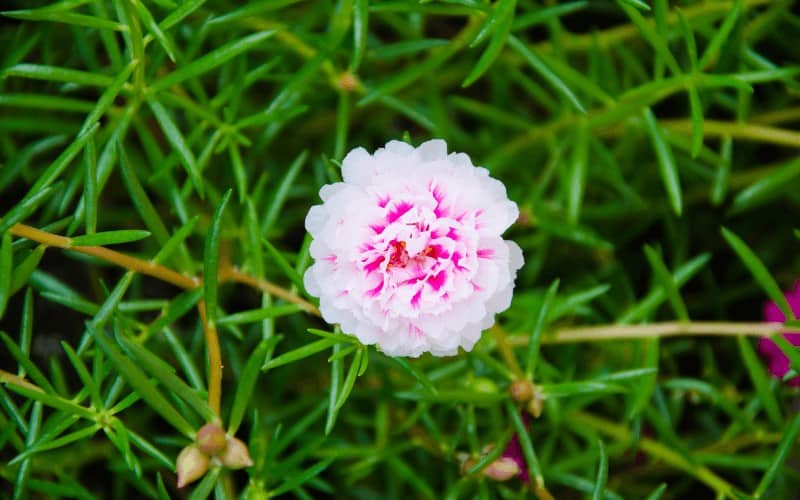
Common purslane is a fast-growing herbaceous annual weed that is a member of the Portulacaceae family. The plant is grown in many countries all over the world.
It has different names, such as common purslane, little hogweed, duckweed, parsley, wild portulaca, etc.
Common purslane has smooth succulent red stems and shiny, dark green leaves. It’s a trailing plant and usually spread on the surface of the soil.
Its leaves are often clustered at joints and the stem ends. Common purslane grows small yellow flowers with heart-shaped petals all through the year. Eventually, the flowers are replaced by seed capsules.
Common purslane is an edible plant and has been eaten by humans for centuries. Although, it is seen as a weed in some places and regarded more like a vegetable in many regions as many people consume it cooked or raw.
13. Aechmea Triticina
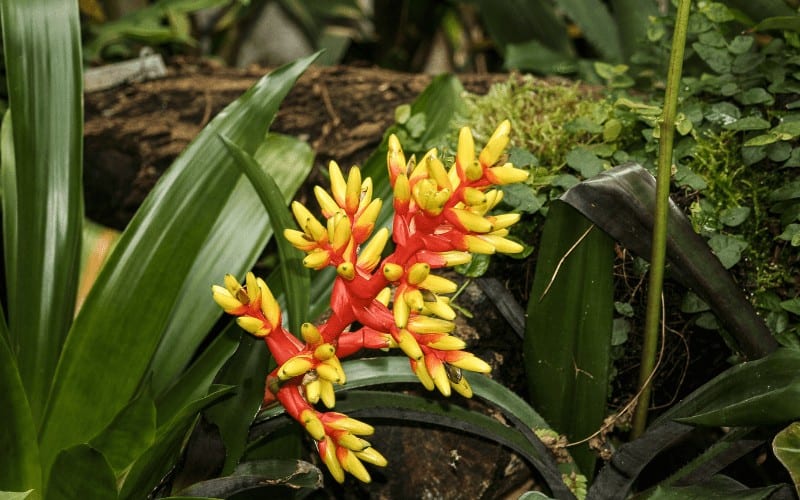
Aechmea triticina belongs to the Bromeliaceae family and in the genus Aechmea. The plant is native to eastern Brazil, and is popular in the States of Rio de Janeiro and Espírito Santo. It is a hardy plant and can tolerate hot sun and dry spells.
This species has cone-shaped, yellow flowers that grows from red stem bracts. According to Andrew Steens in his book ‘Bromeliads for the Contemporary Garden,’ “Aechmea triticina's flowers is curious, rather than beautiful."
This bromeliad is fast growing and can easily spread over large spaces in no time.
14. Elephant Bush (Portulacaria Afra)
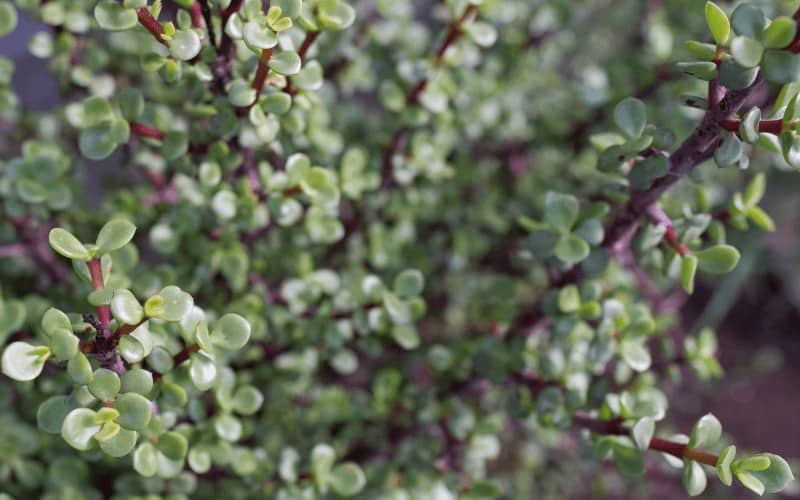
Native to South Africa and also known as porkbush, dwarf jade plant, or spekboom, Elephant Bush is a semi-evergreen succulent shrub.
It’s mostly found in the Eastern part of South Africa – and is used for landscaping in many states of the United States and as an ornamental plant in different parts of the world. People also grow elephant bush as bonsai.
The plant has red stems and succulent shiny green leaves. As the plant matures, the stems thicken and turn reddish-brown. A fully matured shrub can grow up to 13 feet (4 m) tall and more.
15. Red-Stemmed Lady's Mantle (Alchemilla erythropoda)
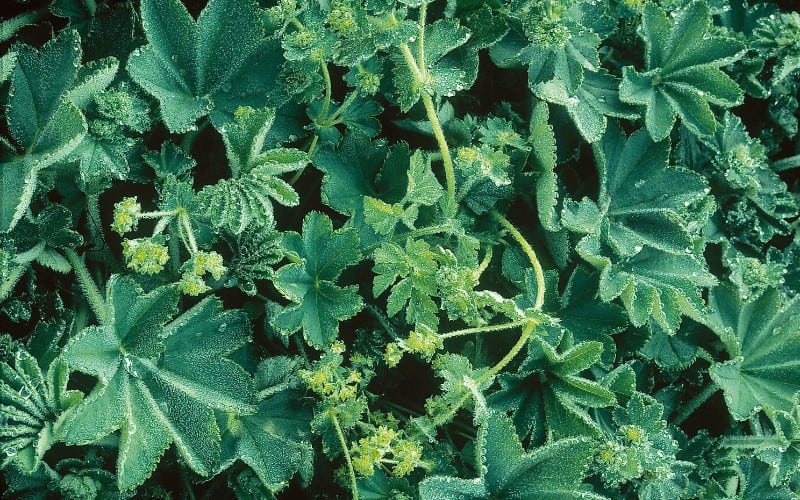
Red-stemmed lady's mantle reverses the regular green stems and red flowers pattern by producing delicate puffs of little lime green flowers, hovering above a field of blue-green or grey foliage.
When grown in sunny spots, its stems turn an attractive shade of red. Red-stemmed lady's mantle flowers in early to mid-summer, and can grow up to 24 inches tall.
It makes amazing flower beds – and can also be used as a border plant. Finally, the flowers can be cut and used either fresh or dried.
Small Plants With Red Stem And Green Leaves
There are a lot of small plants with red stems and green leaves. Here are some names of small plant with red and green leaves
- Red Osier Dogwood (Cornus Sericea)
- Himalayan Balsam (Impatiens Glandulifera)
- Wineberry (Rubus Phoenicolasius)
- Common Purslane (Portulaca Oleracea)
- Elephant Bush (Portulacaria Afra)
- Mountain Pepper (Drimys Lanceolata)
Plants With Red Leaves
As there are plants with green leaves, there are also some with just red leaves. What plants have red leaves? Here are some of them
- Ti Plant (Cordyline fruticosa)
- Croton (Codiaeum variegatum)
- Bromeliad (Bromeliaceae)
- Copperleaf Plant (Acalypha wilkesiana)
- Bloodleaf Iresine (Iresine herbstii)
- Joyweed (Alternanthera dentate)
- Hau (Hibiscus tiliaceus)
Conclusion | What Plants Have Red Stems?
Identifying what plants have red stem is not as difficult as it sounds as has been revealed by this article.
Having read through this guide, you might have learned one or two things especially the names of plants with red stems.
Now, if you have been thinking of growing these types of plants for any reason, you now have all the information you need to grown them. Just pick any of them right now and see how they thrives in your home and garden.
And don't forget to reach out to use if you have any question regarding these red stem plants.

